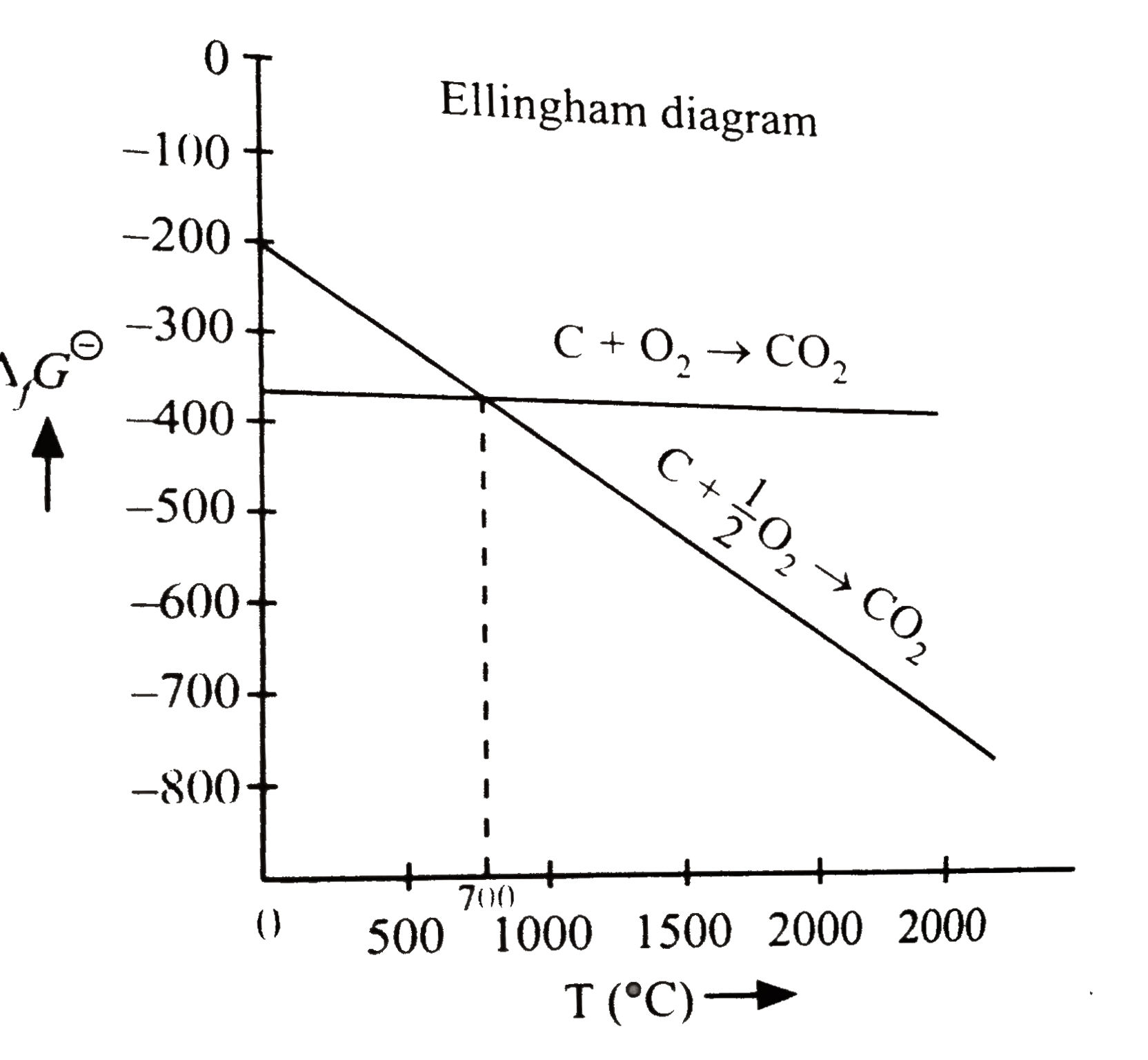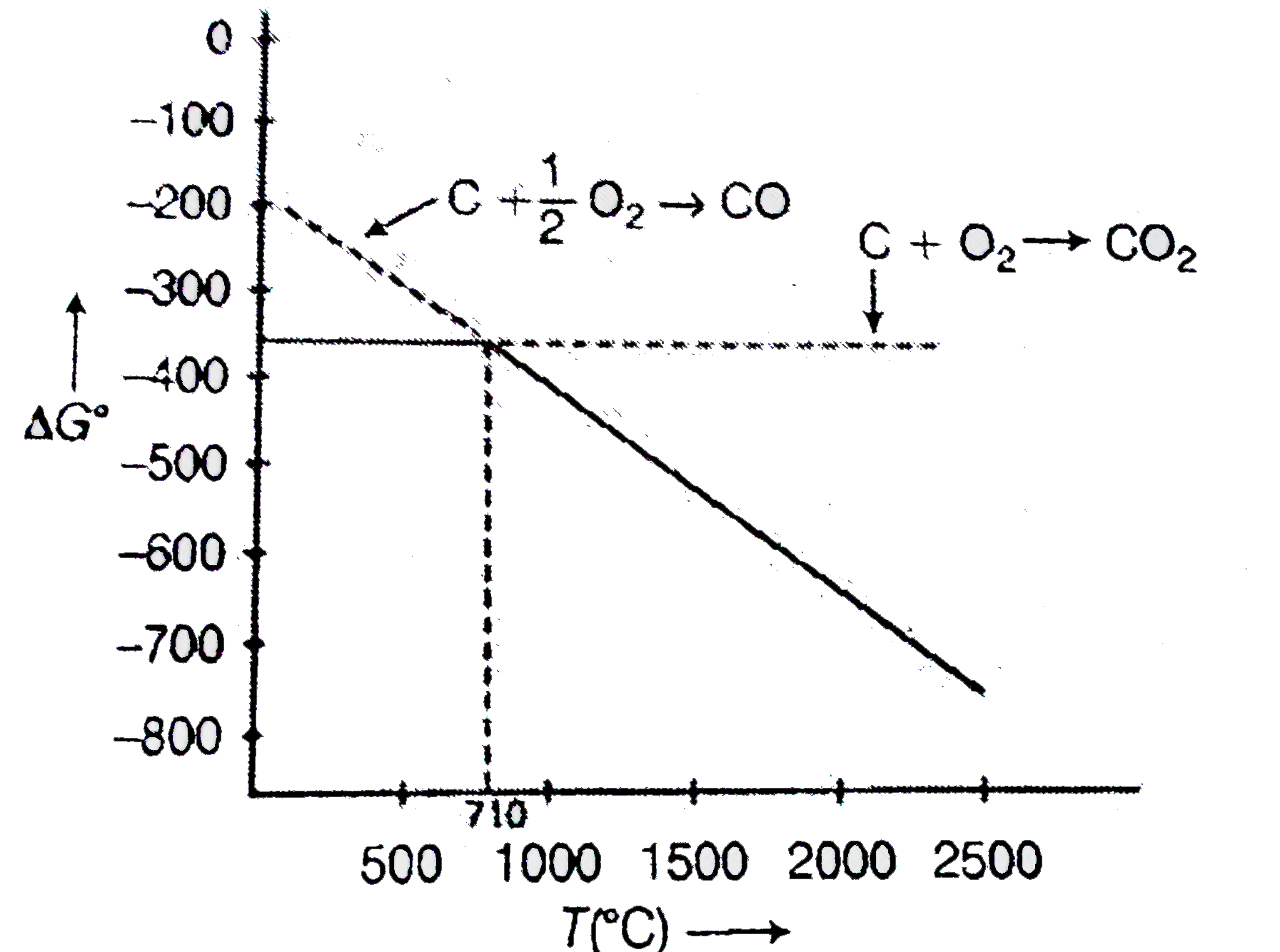
Which of the following is incorrect on the basic of the above Ellingham diagram for carbon ?
Up to 710∘C, the reaction of formation of CO2 is energetically more favourable, but above 710∘C the formation of CO is preferred.
In principle, carbon can be used to reduce any metal oxide at a sufficiently high temperature.
ΔS[C(s)+1/2O2(g)→CO(g)]
<ΔS[C(s)+O2(g)→CO2(g)]
Carbon reduces many oxides at elevated temperature because ΔfGӨvs temperature line has a negative slope.
The correct Answer is:C
Step by step video, text & image solution for Which of the following is incorrect on the basic of the above Ellingham diagram for carbon ? by Chemistry experts to help you in doubts & scoring excellent marks in Class 12 exams.
Topper's Solved these Questions
- BOOK - CENGAGE CHEMISTRYCHAPTER - GENERAL PRINCIPLES AND PROCESS OF ISOLATION OF ELEMENTSEXERCISE - Exercise (Assertion-Reasoning)18videos
GENERAL PRINCIPLES AND PROCESS OF ISOLATION OF ELEMENTS
- BOOK - CENGAGE CHEMISTRYCHAPTER - GENERAL PRINCIPLES AND PROCESS OF ISOLATION OF ELEMENTSEXERCISE - Exercise (Integer)27videos
GENERAL PRINCIPLES AND PROCESS OF ISOLATION OF ELEMENTS
- BOOK - CENGAGE CHEMISTRYCHAPTER - GENERAL PRINCIPLES AND PROCESS OF ISOLATION OF ELEMENTSEXERCISE - Exercise (Multiple Correct)43videos
GENERAL PRINCIPLES AND PROCESS OF ISOLATION OF ELEMENTS
- BOOK - CENGAGE CHEMISTRYCHAPTER - ELECTROCHEMISTRYEXERCISE - Archieves Subjective35videos
ELECTROCHEMISTRY
- BOOK - CENGAGE CHEMISTRYCHAPTER - GRIGNARD REAGENTS AND ORGANOMETALLIC REAGENTSEXERCISE - Exercises Archives (Linked Comprehension)1videos
GRIGNARD REAGENTS AND ORGANOMETALLIC REAGENTS
Similar Questions
Knowledge Check
- Question 1 - Select One
Which of the following is incorrect about sodium carbonate ?
AWith hot milk of lime, it reacts to form sodium hydroxideBIt reacts with dilute mineral acids evolving CO2(g)CIt undergoes hydrolysis to form an acidic solutionDNone of these - Question 2 - Select One
Consider the following Ellingham diagram for carbon

Which of the following statements is incorrect for the above Ellingham diagramAUpto 710∘C, the reaction of formation of CO2 is energetically more favourable but above 710∘C, the formation of CO is preferredBCarbon can be used to reduce any metal oxide at a sufficiently high temperatureCCarbon reduces many oxides at elevated temperature because ΔG∘ vs temperature line has a negative slopeDΔS∘[C(s)+12O2(g)→CO(g)]
<ΔS∘[C(s)+O2(g)→CO(g)] - Question 3 - Select One
Ellingham diagram represents:
AChange of ΔG with temperatureBChange of ΔH with temperatureCChange of ΔG with pressureDChange of (ΔG−TΔS) with temperature
Ellingham diagram represents:
View SolutionWhich of the following is not correct observation on Ellingham diagram ?
View SolutionWhich of the following statements is INCORRECT on the basis of Ellingham diagram ?
View SolutionEllingham diagram represents :
View SolutionEllingham diagram represents:
View Solution

